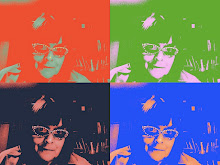Kids need protecting, and stores that sell toys need a good information chain to help in the protection process
It should be a no-brainer to find toys that are trustworthy, but instead this year the whole realm of playthings seems to have settled under a cloud that would put our Michigan winter shade of grey overcast to shame. Anyone who sells toys as I do knows what I mean. While the Consumer Product Safety Commission claims not to need more funding or a more extensive screening program, children are being exposed to things that should not have made it to the shelves in the first place: charming painted toys that threaten kids' health with lead based paints; small plastic dots covered with a toxic coating that emulates the date-rape drug; small pieces that can prove dangerous due to choking.
In fact, in some ways, it seems as though we have returned to a bygone era in which we don't try hard enough to correct for potential harm, even for our youngest and most defenseless consumers. In the early part of the last century, products were not adequately screened and Coke contained cocaine, ladies' “remedies” were often mostly alcohol; and celluloid film caused early movie venues to burn to the ground. Eventually we realized that the problem was to set standards and try seriously to enforce them.
The most vocal critics of this important political intervention (that some would call interference) try to make government regulations seem overbearing. Good luck, moms and dads, with the toxic paint and the choking hazards and the beads that can be lethal if ingested. (And not to put too fine a point on it, Aqua Dots were Australia's Toy of the Year winner in 2007. They were expected to take the U.S. by storm. They showed up in last weekend's Toys 'R' Us advertising circular, written and designed before kids started getting sick.)
So let me reiterate my point of view here and now: kids need protecting, and stores that sell toys need a good information chain to help in the protection process. That is why Cranesbill deals with companies that are interested in maintaining their own testing facilities and that are willing to make this integrity public. Our two main suppliers are Toysmith and Melissa and Doug, and both have gone out of their way to be proactive about safety and standards.
I would never knowingly put a toy into the hands of one of your kids or their friends if I knew it to be dangerous. Following the stories that are out on an almost daily basis now, I have been comforted by the fact that many of the recalls are of toys that we don't really carry-big manufacturers, marketed to consumers of a popular film or TV show, with little play value but lots of glitz. The kind of things found in the Toys'R'Us circular, I guess you could say.
I wouldn't swear to it, but I probably was harmed in childhood by what I didn't know would hurt me: I remember a fondness for chewing pencils that probably has single handedly removed a few million brain cells. Oh yeah, and then there's the red dye #2 cherries, the gas fumes at the old time filling station, the plastic blow-your own-balloon goop that smelled like shellac, the secondhand smoke, burned hot dogs, and on and on.
But that's the very best reason to keep track of what your kids are exposed to. Because if there's no other way to police the toy situation, we have to act. When it comes down to it, I rely on my integrity and that of my suppliers. I hope that the toys that we offer will reflect a persnickety perspective and that you will feel confident about your purchases because we worry about them before you arrive.
Blog of Janet Loveland, former owner of Cranesbill Books in Chelsea Michigan.
Our Store
Cranesbill Books was an independent book and toy store located in downtown Chelsea, Michigan. It closed December 11, 2009. Please patronize your local independent retailer whenever you can.
About Me

- Jan Loveland
- Chelsea, Michigan, United States
- former bookstore owner; current writer